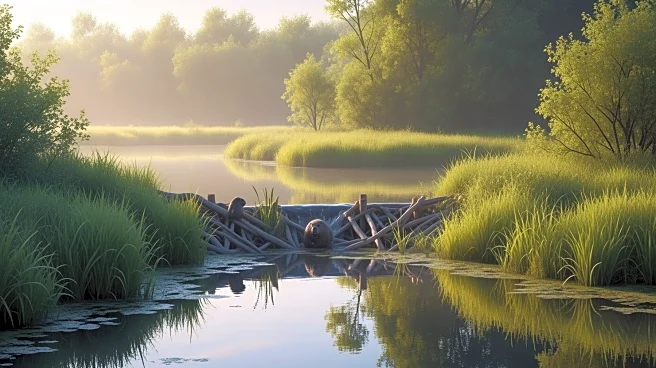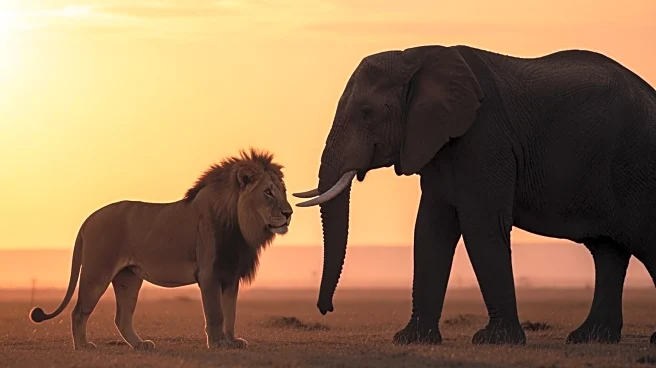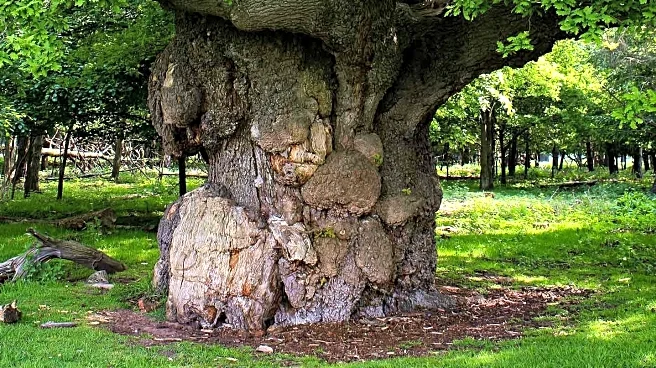What's Happening?
A study conducted by Loyola University Chicago has found that muskrats play a crucial role in restoring biodiversity in Great Lakes wetlands by controlling invasive cattail populations. Muskrats cut cattails
underwater, disrupting their growth and allowing native plants to thrive. This activity creates diverse habitats for wildlife, including fish, birds, and amphibians. The study suggests that mimicking muskrat behavior through human management strategies could enhance wetland restoration efforts where muskrats are not present.
Why It's Important?
The findings highlight the ecological importance of muskrats in maintaining healthy wetland ecosystems. By controlling invasive species, muskrats contribute to the preservation of biodiversity, which is vital for the overall health of the Great Lakes region. The study also suggests that human intervention can replicate muskrat activity, offering new strategies for wetland restoration and conservation.
What's Next?
Further research is needed to explore the potential for using muskrats in wetland restoration projects and to assess the effectiveness of human management strategies that mimic muskrat behavior. Conservationists may consider relocating muskrats to areas where they can help control invasive species and enhance biodiversity.
Beyond the Headlines
The study raises awareness about the cultural significance of muskrats to Indigenous communities and the need to incorporate traditional ecological knowledge into modern conservation practices. It also highlights the potential for innovative approaches to ecosystem restoration that leverage natural processes.













